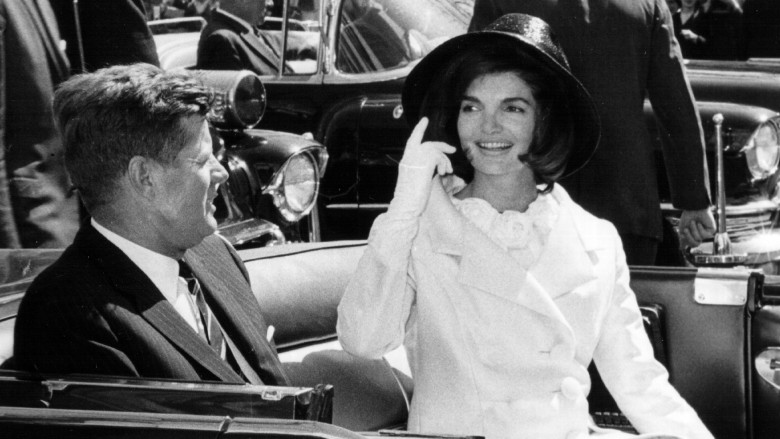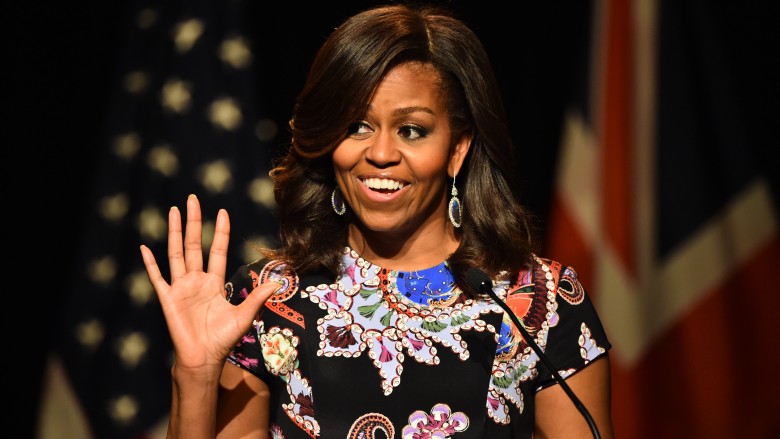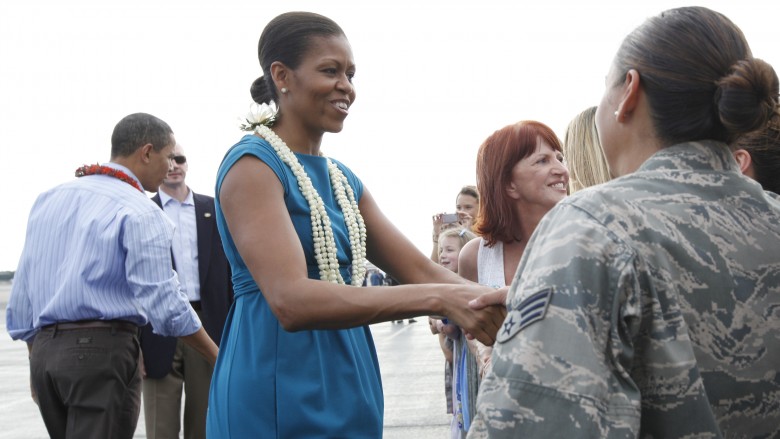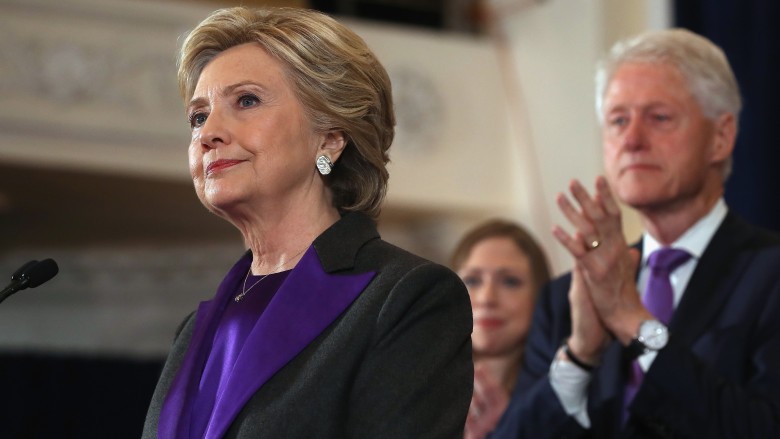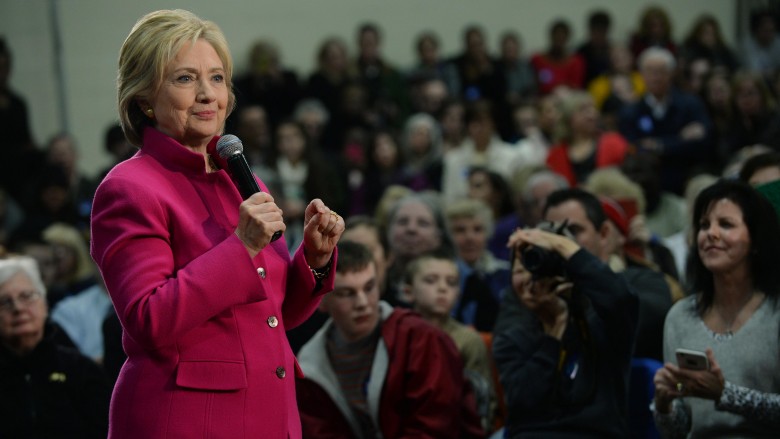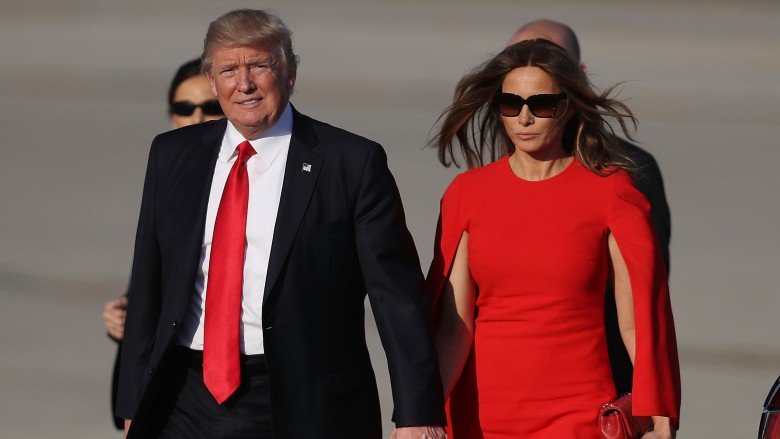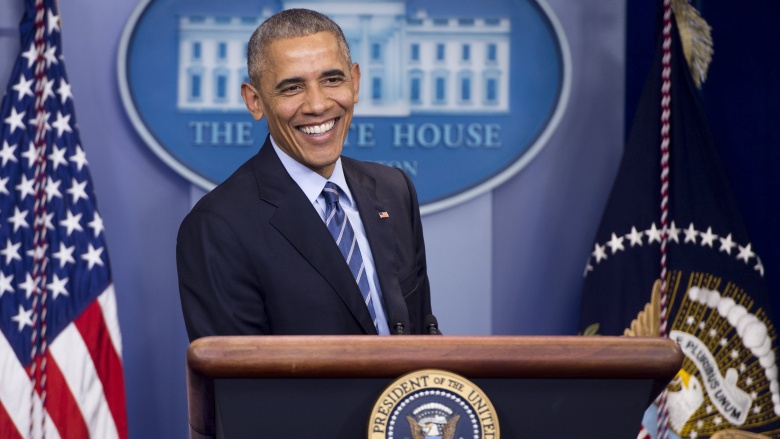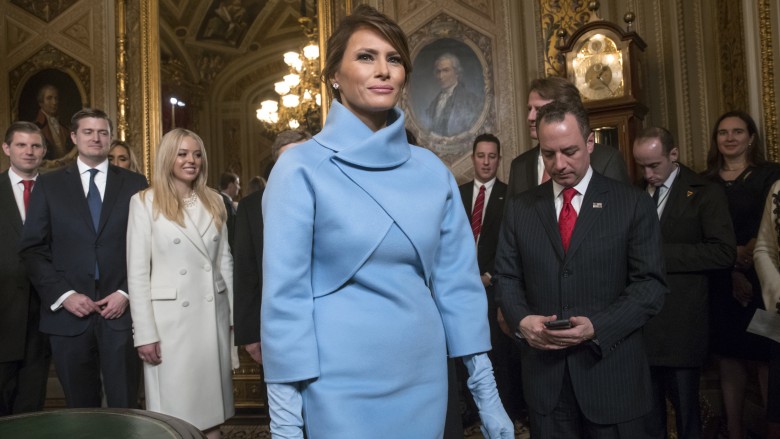The Truth About Fashion In Politics
When we think of fashion, the first thoughts that come to mind are runways, celebrities and designers. But what about politics? Fashion and politics may not seem to go hand-in-hand on first thought, but think again.
Every clothing choice at every event has been thought through very carefully for these politicians — and says way more than what's on the surface. From color to designer, these politicians have a team behind them helping with those fashion choices — choices that also influence the brand of that individual.
It's amazing how certain pieces of clothing can be associated permanently with a person of politics. Take the pantsuit for example? So let's take a look at some key fashion moments in politics and the historical significance they have also created.
We have to start with Jackie
It would be wrong to not kick off with Jackie Kennedy when talking about fashion and politics. At just 31 years old, this New York native became First Lady when her husband John F. Kennedy, was elected in 1961. Although just in the White House for two years, Kennedy made quite the statement in that short amount of time. Her go-to's included the pillbox hat, pearls and white gloves. These items exude class and that's just how we still think of the woman who wore them. Kennedy's personal designer at the time was American designer Oleg Cassini. According to The Telegraph, his mission was to dress Kennedy as "an American queen." Mission accomplished.
Kennedy's fashion choices made her stand out as political royalty. But her looks did more than just showcase new fashion — she helped shift the style of women at that time. As The Telegraph said, "She guided women out of the prim dresses, stiff petticoat skirts and overly styled hairdos of the 1950s and into sleeker, more contemporary designs." And though she herself may not have been the President, she kept her husband's administration in mind with her choices as well. As fashion historian Valerie Steele said to ABC News, "She used the modernity of fashion to imply that her husband's administration was young, modern and forward thinking.”
How Michelle Obama gave off the approachable look
Michelle Obama brought fashion to the White House in a very different way than ever before. She took on new trends that weren't accessible to just the rich and mighty but to everyone. As Glamour described it, "What truly made Obama such a powerful style icon during her time in the White House, though, was the wink that her clothes made to women everywhere: You too can look this good."
Obama had so many great looks during the time of her husband's presidency, but her standouts included many sleeveless dresses — which wasn't a usual trend for the past styles of a First Lady. Designer Rachel Roy commented on the First Lady's dress choices, saying, "[Mrs. Obama's] style and choices set a tone that fashion is reflective of your personality and that you can have fun with it." Obama was never afraid of bright colors and statement jewelry. She also showed us that we don't have to wear heels to look classy.
But it went beyond the clothes. Did she look great in them? Yes. But it was her comfort both in the clothes and in herself that truly shined. A favorite designer of Obama, Prabal Gurung, spoke with Glamour, saying, "She's unapologetic about being a woman, embracing femininity, she loves fashion but it doesn't dictate her." Fashion may not have dictated the First Lady, but she definitely had a hold on the fashion industry. According to Glamour, a professor at NYU tracked 189 of Obama's outfits that she wore from 2008 to 2009, and discovered it was worth almost $38 million for a company to have Obama wear their clothes. Obama's personality, confidence and intelligence, and how she was able to portray that in her style, will be remembered forever in fashion history.
Making affordable trendy
Michelle Obama not only showcased trends that the everyday woman could wear, but could afford as well. We started noticing this about the FLOTUS even before she was in the White House, and campaigning with her husband in 2008. While on The Tonight Show with Jay Leno, she was asked what she was wearing and her response was, "J. Crew...Ladies, we know J. Crew. You can get some good stuff online!" And she kept that thought all through her next eight years as First Lady. Her style never felt fake or that she was showing off her affordable fashion in front of the cameras. It was real. When at formal events and large gatherings, she had her go-to fabulous designers, like Jason Wu and Vera Wang. But when she was living her day-to-day life, we saw her rocking clothes from H&M, J. Crew, and Target. As designer Narciso Rodriguez told The New York Times, "She came in at a time when the economy was particularly tough and really shone a light on fashion in the broadest sense."
Her love of a good deal was contagious. Another influential person we have since seen do the same thing is the Duchess of Cambridge, Kate Middleton. She's been spotted many times either re-wearing previous outfits or pulling out a key piece from Gap. These women have been doing incredible work in their roles, and when they wear clothing from stores that women shop at when at their local malls, it brings about a connection. By wearing brands we know, we know just a little bit more about these powerful women. And we definitely like what we're seeing.
Color is key
It's not just the style of clothing pieces that can make a statement, but the color of those pieces as well. We've seen many people in politics use the color of their clothing to make a silent statement that doesn't need to be shared out loud. When Michelle Obama first started her job as FLOTUS, she wore a lemon-colored dress and coat. As Elle Magazine described, that color goes hand-in-hand with the suffrage movement in the twentieth century. At that time, if politicians wore a yellow rose, that mean they were in support of the Nineteenth Amendment, which would grant women the right to vote.
Another politician who has been well-known for her color choice is Hillary Clinton. After losing the 2016 presidential election, Clinton gave her concession speech in a black and purple pantsuit. In the background we could also see former President Bill Clinton in a tie of that same color. What could that symbolize? According to political consultant Laura Schwartz, this is a signal of bipartisanship. While red and blue normally symbolize if one is Republican or Democrat, the purple is a sign of unity. It is very fitting then, that during Clinton's speech she made the following statement, "We have seen that our nation is more deeply divided than we thought...But I still believe in America, and I always will. And if you do, then we must accept this result and then look to the future."
And that wasn't Clinton's only statement outfit when it came to color. At the inauguration for President Donald Trump, Clinton arrived in a white pantsuit. Many took notice of this specific color selection and had thoughts. White was the color worn by suffragettes in order to symbolize purity and to protect them from, as Vanity Fair called it "their opponent's claims of immorality." Rarely does it seem that these politicians are addressing their color choice. Rather, it seems more like a hint to the audience a secret that just they are in on with this politician.
The power of the pantsuit
Ah, the pantsuit. Today, when one thinks of the word "pantsuit," the thought of Hillary Clinton can't be far behind. The former Secretary of State has become known through the years for her signature pantsuits, but this wasn't always the case. When Clinton was First Lady, she was seen in many dresses and skirts. It wasn't until 2008 the pantsuit seemed to take center stage, and there could be a few key reasons for that. The pantsuit is a way to show authority. It signals taking charge, but also isn't too loud. The Atlantic summarized the article of clothing perfectly, saying, "It's a statement outfit that makes its statement by saying as little as possible." And though it may be hard to believe, women were not allowed to wear pantsuits on the Senate floor until 1993.
Clinton received criticism often for her style in the past, and when she would be speaking on important matters, many focused not on her words, but her clothing and decided to talk about that instead. Because of this, the pantsuit became Clinton's armor. Because of the no-nonsense look, people could finally stop thinking about what Clinton was wearing and start thinking about the topics she was covering. In January 2016, after one of the primary debates,The New York Times fashion critic, Vanessa Friedman, commented on this very fact. She said, "During and after the debate on Sunday, there was, for the first time I can remember, barely a whisper about what she wore. Can you even remember what it was? It was so nondescript, it was just not cause for comment."
Clinton also used her frequently worn pantsuit as a catalyst to also display her humor. She was aware of how often she wore that style and could poke fun at herself for that very reason. This opened Clinton up more to her fans and gave them a taste of the funny woman behind the pantsuit; The woman who was educated and tough enough to handle the real issues, but who would be the first to also make a comment about her own signature outfit that day.
Politicians have stylists too
So how do politicians pick and choose what to wear to those important events and occasions? Although this can't be said for all politicians, many have help from a stylist. Corey Roche, a personal stylist who works in D.C. told The Business of Fashion (BoF), "Trump has a budget, Sanders has a budget, Hillary has a budget...There is [campaign] money allocated to fashion and clothes, because that is a huge part of marketing and branding." So how do stylists know what to pick for their clients? It definitely depends on the client. Roche said, "You cannot spend a lot of money. I have never seen, except for Donald Trump, a [male] politician wear a Hugo Boss or an Armani suit." He continued to say that if a politician is caught in an expensive label, the public "will absolutely eat you alive." Former Secretary of State Hillary Clinton saw a bit of that response when she wore an Armani jacket that cost more than $12,000 while speaking about income inequality.
Politicians can also support their own agenda with their wardrobe choices. For example, according to BoF, Obama has worn many suits by tailor Martin Greenfield. His Brooklyn business helps support United States jobs. And to top it off, his suits tend to be $2,000 or less, which is seen as a more manageable price for a politician. And sometimes they also get a little help with style advice from other pros too. BoF reported that Clinton had been consulting with Anna Wintour, the American Vogue editor-in-chief, when it came to her campaign outfits. Overall, stylists can be key for politicians, and Roche brings up one key reason. "Our role as a stylist is that they never have to worry about clothes."
And now the new First Lady
Throughout the 2016 presidential campaign, Melania Trump seemed to often be in the background, as her husband and now President, Donald Trump, took center stage with his words and presence. When it came time for the inauguration, many wondered what Melania Trump would wear and what that choice would signify. Some designers were very open about that fact that they would not want to dress the new FLOTUS, while others, like Tommy Hilfiger and Carolina Herrera, said they would take on the role. This in particular was a unique opportunity for designers to share their political views with their work. According to Associated Press, Naeem Khan, an Indian-born American designer, said in an interview, "Every designer has a point of view...A designer is an artist, and should have the choice of who they want to dress or not" He went on to say that Melania Trump "might be a great person for all we know." But he continued to say, "the values of this administration do not comply with the values of who I feel we are as a nation."
And Kahn brought up an excellent point. The new First Lady may be a great person. We haven't had the chance to know her well. So when the moment of the inauguration came, all eyes were on Melania, and she hit it out of the park. The New York Times' Vanessa Friedman summarized it perfectly. "Elegant, unexpected dress? Check. Unknown designer elevated to overnight sensation? Check. New York brand? Check. Implicit message about cooperation and embracing the melting pot? Check."
During the Inauguration Day swearing-in, Melania wore a powder-blue Ralph Lauren dress and coat that seemed reminiscent of Jackie Kennedy's outfit on Inauguration Day. Coincidence? Probably not. And in the evening, she wore a white, sleek gown. She collaborated with designer Hervé Pierre, who in the past had been the creative director for Carolina Herrera, but this was his first major dress under his name only. Although this was just one occasion, we are curious to see what Melania will bring on next, both politically as First Lady, and with the fashion that inevitably comes along with that. If there is one thing we know for sure, it's that the world will be watching to see what she does next.

